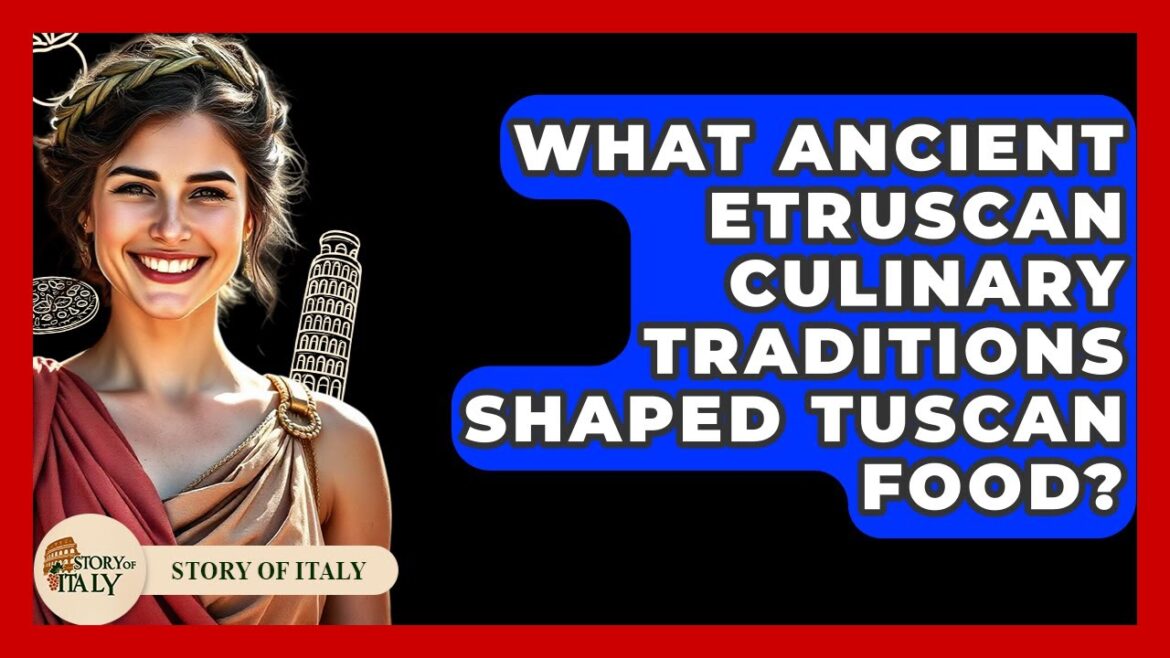What Ancient Etruscan Culinary Traditions Shaped Tuscan Food? Have you ever wondered how ancient culinary traditions continue to influence the flavors of Tuscany today? In this fascinating video, we explore the culinary practices of the ancient Etruscans and how their legacy shapes modern Tuscan cuisine. We’ll start by examining the land-based ingredients that were central to their diet, such as olives, grapes, legumes, and cereals, and how these elements remain fundamental in regional dishes. You’ll learn about their early cultivation of olives and vineyards, laying the groundwork for iconic products like olive oil and Chianti wine. We’ll also discuss their approach to hearty soups like ribollita, made with bread, vegetables, and legumes, reflecting a style known as cucina povera, or “poor kitchen.” Additionally, we’ll uncover their methods of preparing meats like wild boar and their hunting for prized ingredients like truffles, which are still celebrated today. Archaeological findings reveal that the Etruscans were among the first to develop early forms of pasta, showcasing their inventive spirit. Their emphasis on natural flavors, seasonal ingredients, and simple preparation methods continues to define Tuscan gastronomy. Join us to discover how this ancient civilization’s culinary traditions are woven into every bite of Tuscan food enjoyed today. Subscribe for more stories about Italy’s rich history and culture!
⬇️ Subscribe to our channel for more valuable insights.
🔗Subscribe: https://www.youtube.com/@StoryOfItaly/?sub_confirmation=1
#TuscanCuisine #EtruscanHistory #ItalianFood #TuscanFood #AncientItaly #FoodHistory #TraditionalCooking #OliveOil #ChiantiWine #Ribollita #ItalianCuisine #CucinaPovera #ItalianHeritage #TuscanFoodCulture #ItalianTraditions
About Us: Welcome to Story of Italy, your gateway to exploring the rich tapestry of Italian culture, history, and lifestyle. Our channel is dedicated to uncovering the fascinating narratives that shape Italy, from its ancient roots to modern-day marvels.
Please note that all content on this channel is for informational purposes only. We encourage you to conduct your own research and due diligence before making any decisions based on the information provided. Thank you for joining us on this journey through the Story of Italy!
[Music] What ancient Atruscan culinary traditions shaped Tuscan food. Imagine walking through Tuscanyany thousands of years ago and tasting the flavors that still define the region today. The Atruscans who lived here from around the 8th century B.C.E. to the 3rd century B.CE. left a lasting mark on Tuscan cuisine. Their way of cooking and eating was simple but rooted in the land’s natural bounty. They focused on highquality local ingredients which remains the backbone of Tuscan dishes. For example, they were among the first to cultivate olives and grapes extensively. Olive oil became a key ingredient used for cooking and seasoning and their vineyards laid the foundation for the region’s famous wines like chianti. The Atruscans also relied heavily on legumes and cereals. They made hearty soups with barley, beans, and lentils, a tradition that still exists in dishes like ribbalida, a thick vegetable and bread soup. Their approach was all about making the most of humble ingredients, a style known today as cuchina pova or pork kitchen. When it came to meat, the Atruscans raised pigs, goats, and sheep. They grilled wild game like wild boar over open flames. a practice that inspired modern Tuscan steak dishes. They also hunted four truffles, which are still prized in Tuscanyany today, especially in seasonal recipes. Archaeological finds suggest they were making early pasta by mixing flour and water, shaping it with tools similar to rolling pins and knives. This predates Roman pasta and shows how innovative they were in developing staple foods. The Atruscans used olive oil not just for cooking but also for seasoning, emphasizing natural flavors and healthy fats. Their culinary traditions focused on fresh seasonal ingredients, simple preparation and respect for the land. When you enjoy a bowl of ribbala or a plate of wild boar ragu in Tuscanyany, you are tasting a legacy that stretches back more than to thousand years. Their influence is woven into the very fabric of Tuscan gastronomy, making every bite a connection to ancient times. [Music]


Dining and Cooking